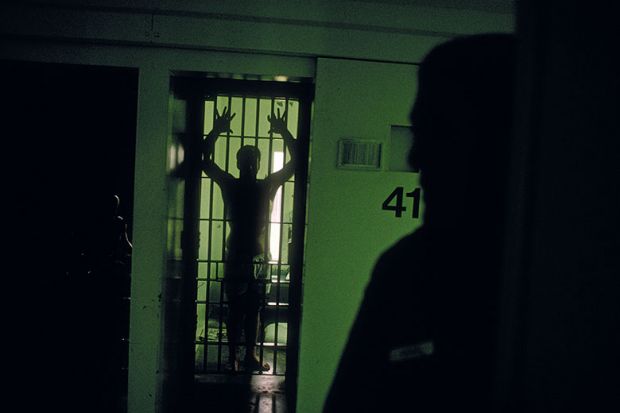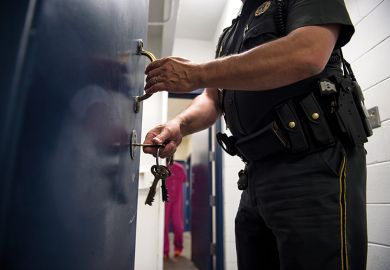Having solved many problems germane to their own discipline, economists have begun to cast about for other conquests. In the field of crime, this work has dabbled at the edges of interesting and intractable problems such as decision-making, risk assessment and deterrence. With few exceptions, it has avoided a “grand sweep” in bringing to bear the methods, insights and rich economics literature that may relate to crime and criminal justice. Yet the growth of “behavioural economics” – looking at the role of economic principles in non-economic aspects of human behaviour – has led to new and interesting perspectives on persistent problems.
Shadows of Doubt is neither timid nor narrow in its approach to many of the key issues of crime and justice facing the US. The scope of the book is broad and in most respects it sheds new light on old problems with thoughtful analyses. While most economists are content to focus on a single topic (drugs, capital punishment, guns), O’Flaherty and Sethi employ a comprehensive approach to explaining crime. Specifically, they classify crimes in the two categories of crimes of destruction and appropriation. Criminologists know these categories as instrumental/expressive or acquisitive/violent, but their dichotomy is a useful if non-traditional one. They then move through the various stages of the criminal justice system from policing to prosecution, post-adjudicatory responses (imprisonment, fines, community supervision) and finally to broader issues of justice, including fairness.
Such an analysis cries out for a broader explanatory framework to tie the pieces together, lest the explanations and solutions for problems get caught in the same Balkanisation that plagues the criminal justice system itself. O’Flaherty and Sethi don’t disappoint here either. As economists with a strong interest in the role of race/ethnicity at the individual and structural levels of behaviour, they point to stereotypes as a unifying theme across decision-making in the criminal justice system, as well as in areas such as employment, housing and education that affect engagement with it. This reader would have liked a stronger framework for understanding the origins and impact of these stereotypes. Perhaps this would have ensured that stereotypes remain core to the explanatory framework used throughout the book. (They are front and central in the early chapters, only to fade into background until the conclusion.)
Stereotypes are ways to process large amounts of data through the creation of “categories” that capture much of that variation and provide an organisational scheme. Prosecutors and defence attorneys know what a “normal crime” is when they see the docket of cases awaiting their attention. That allows them to dispose of such cases “in bulk”. The police identify “symbolic assailants” or people who are “out of place” and thus deserve more and different types of intervention. Such stereotypes form the “perceptual shorthand” officials use to make decisions and process cases efficiently if not justly. Taken cumulatively, the sum of such stereotyped decision-making produces the widespread disparities in outcomes by race or ethnicity in the US. O’Flaherty and Sethi carefully and effectively identify this process in many of the decisions (traffic stops, pedestrian stops, drug enforcement) that are essential to the creation and maintenance of such disparities.
Careful analysis, however, doesn’t ensure change and systems that have developed processing norms, such as criminal justice, are likely to be slow to change. Two brief examples illustrate the analysis presented by the authors. First, they note changes in the patterns of robbery that reflected the increased involvement of the “boldest” offenders and withdrawal from the offence by more “timid” offenders. This changed the overall character of robbery, making it more violent. Second, the role of entry into and exit from prison is key to understanding mass incarceration. Prison populations may grow when more offenders enter prison or when more offenders stay longer. In the 1980s and 1990s, robbers received considerably longer sentences, increasing their length of incarceration and so contributing to the growth of mass incarceration.
Perhaps it is the mark of a solid argument that one is left wanting more. The failure to link some of the rich economic work done independently and jointly by the authors to the key themes in the book is one such example. (Of course, readers are not prevented from pursuing such works on our own.) Another quibble is the lack of integration with similar work from other disciplines. This is most evident, ironically, in the failure to link the work on stereotypes to the growing work on “colourism” in psychology and sociology. Such an integration would be a helpful task for these talented authors to undertake.
Most people who study crime put faith in explanations that include cultural and emotional components of the sources of crime. There is insufficient attention to such explanations here. In their identification of countries with high rates of imprisonment, the authors dismiss out of hand a potential role for explanations that stress cumulative social and economic disadvantage. Yet both individual- and aggregate-level analyses of crime/incarceration patterns strongly implicate such explanations. More attention to this would be useful.
A final irony is that much change in American criminal justice has been in response to the increased costs of criminal justice in municipalities and states that accompanied the expanded use of arrest and incarceration to respond to the war on drugs specifically and crime more generally. States did not make substantial changes to their incarcerated populations because the racial climate improved but because costs threatened to increase taxes or squeeze other sectors of the budget further. A discussion of this factor by economists would be most welcome.
The authors review a good deal of data across the course of the book and are largely silent about their strengths and inadequacies. For example, it seems implausible both that there could be no registry of citizen deaths at the hands of law enforcement in the US, and that the best data are kept by a British newspaper. Nonetheless, they offer a solid analysis and fresh perspectives on how the US got into its current predicament that may have relevance for readers in the UK and elsewhere. While the US currently incarcerates roughly 716 individuals per 100,000 population, the figure for England and Wales is 148. O’Flaherty and Sethi suggest that voters may play a role in finding a way out of the current morass, while noting that they often focus on the wrong sets of facts or issues. Coming up with solutions will not be easy, but careful attention to works like this may help to avoid making things worse.
Scott H. Decker is foundation professor of criminology and criminal justice at Arizona State University. The Handbook of Gangs, co-authored with David C. Pyrooz, will be published later this year.
Shadows of Doubt: Stereotypes, Crime, and the Pursuit of Justice
By Brendan O’Flaherty and Rajiv Sethi
Harvard University Press, 384pp, £20.95
ISBN 9780674976597
Published 26 April 2019
The authors
Brendan O’Flaherty, professor of economics at Columbia University, attended Harvard University but has spent most of his life in Newark, New Jersey. Much of his work, he believes, “arise[s] out of Newark, where crime and race have been the main topics of worry and discussion for the past half-century. Rajiv and I started to write about crime about 15 years ago with several game-theoretic studies of robbery. Then we started to think about murder (spurred by a rise in murders in Newark), which led naturally to papers on witness intimidation and drug dealing.”
These topics were developed further in a long joint review essay for the Handbook of Urban and Regional Economics (2015) and O’Flaherty’s own The Economics of Race in the United States (2015), from which “a more in-depth discussion of crime and stereotypes was an obvious step”.
Rajiv Sethi, professor of economics at Barnard College, Columbia University, was born in Delhi and spent his early years in India. Moving to the UK at the age of 11 “played a pivotal role in [his] intellectual development. The National Front was ascendant at the time, and I encountered a lot of racial animosity during my high school years. But I also found little in common with students of Indian origin in my local community.”
A degree at the University of Southampton was followed by two years’ voluntary service in Sierra Leone and a year in India before Sethi moved to the US for graduate study. Although they had already written separately on “various aspects of identity-based inequality”, he recalls, he joined forces with O’Flaherty to work on crime and justice a decade and a half ago. Their new book reflected an “urge to strip our ideas of technical jargon and bring them to a wider audience” while also taking account of the vast interdisciplinary contributions of many other scholars.
Matthew Reisz
Register to continue
Why register?
- Registration is free and only takes a moment
- Once registered, you can read 3 articles a month
- Sign up for our newsletter
Subscribe
Or subscribe for unlimited access to:
- Unlimited access to news, views, insights & reviews
- Digital editions
- Digital access to THE’s university and college rankings analysis
Already registered or a current subscriber? Login








